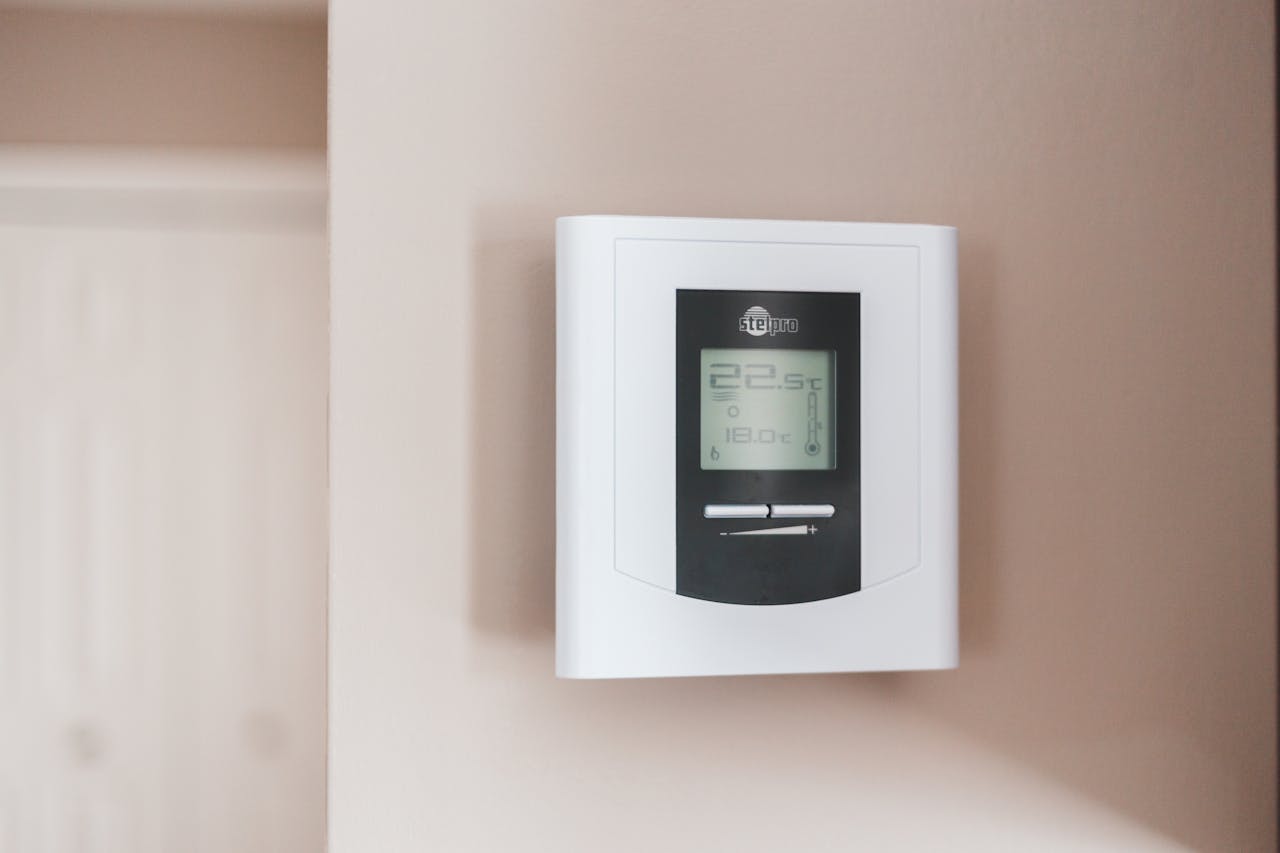
How to Choose the Right HVAC System: Expert Guide to HVAC System Types, Sizing, Efficiency, and Brands
Choosing the right HVAC system begins with clear goals: comfort, consistent humidity control, and cost-effective operation in your local climate. This guide explains system types, how correct sizing is calculated with Manual J, the efficiency ratings you should prioritize, and brand and feature considerations tailored to Northeast Georgia homeowners. Many homeowners struggle with uneven temperatures, high humidity, and systems that run too often or short-cycle; this article offers practical solutions that connect technical choices to everyday comfort. Expect step-by-step guidance on system types (central AC, furnaces, heat pumps, mini-splits, hybrids), a straightforward Manual J overview, energy-efficiency metrics like SEER/AFUE/HSPF, and equipment and IAQ options that address humid-summer, mild-winter conditions. The content also includes actionable lists, structured comparison tables, and clear next steps for professional assessment so you can move from research to a confident purchasing decision.
What Are the Main HVAC System Types for Homes?
An HVAC system is any integrated assembly that provides heating, ventilation, and air conditioning to a home, and the main residential categories each have distinct mechanisms and best-use scenarios. Choosing between central air conditioning, furnaces, heat pumps, ductless mini-splits, and hybrid systems depends on whether you prioritize whole-home ducted comfort, zoned control, fuel preference, or high part-load efficiency. In Northeast Georgia’s humid summers and mild winters, dehumidification performance and part-load efficiency are critical design criteria when evaluating system types. The following comparison table summarizes the practical differences to help homeowners quickly match system types to their home’s layout and comfort goals, and the sections that follow describe benefits and trade-offs for each system type in more detail.
Different system types fit different home needs and ducting situations:
This table highlights how heating vs. cooling capability and ductwork needs determine the practical fit for each household. Next, we’ll look at central air conditioning benefits that homeowners commonly experience.
What Are the Benefits of Central Air Conditioning Systems?
Central air conditioning systems cool the entire home through a network of ducts and a single outdoor condensing unit paired with an indoor evaporator coil and air handler. This approach provides even temperature distribution and effective whole-home dehumidification when sized and controlled correctly, which is especially valuable during humid Georgia summers. Central systems integrate with existing furnaces or air handlers to share ductwork, reducing the need for new infrastructure in retrofit projects and enabling consistent filtration and zoning when dampers and controls are added. Proper duct condition and airflow balance are critical for performance, and homeowners should confirm duct sealing and adequate insulation before relying on central AC for optimal humidity control.
Central systems often pair with modern variable-speed equipment to improve comfort and humidity control, which leads naturally into comparing furnace types for heating choices.
How Do Gas and Electric Furnaces Compare for Home Heating?
Gas and electric furnaces both distribute heat through ductwork, but they differ in heat source, efficiency measures, and operational characteristics. AFUE (Annual Fuel Utilization Efficiency) measures how effectively a furnace converts fuel into heat; higher AFUE percentages indicate more of the fuel becomes usable heat. Gas furnaces typically deliver higher output heat at lower operating cost where gas is available, while electric furnaces offer simpler installation and predictable performance without combustion systems. In Northeast Georgia, many homes can rely on heat pumps for most heating needs, but furnaces remain relevant for higher-heat demand scenarios or where fuel choice favors gas.
Maintenance demands differ between furnace types, and understanding AFUE helps homeowners assess long-term fuel use and replacement planning before deciding between furnace or heat pump solutions.
Why Choose a Heat Pump for Both Heating and Cooling?
Heat pumps transfer heat between indoor and outdoor air to provide both heating and cooling in the same system, using refrigerant cycles rather than on-site combustion. Modern air-source heat pumps with inverter-driven compressors and improved HSPF/SEER ratings can deliver efficient year-round comfort, making them an increasingly common choice in mild-winter regions like Northeast Georgia. Heat pumps also provide consistent dehumidification during cooling cycles and can be highly efficient at part-load conditions, which is important for humid climates where cooling runs frequently at fractional capacity. With recent refrigerant transitions and technology improvements, heat pumps offer a strong balance of efficiency and comfort for many local homes.
Heat pump adoption is rising because of these performance advantages, which naturally leads to considering ductless options for specific zones or retrofit scenarios.
What Are the Advantages of Ductless Mini-Split Systems?
Ductless mini-split systems consist of one or more wall-mounted indoor units connected to a single outdoor inverter-driven compressor and provide zoned heating and cooling without ductwork. They are efficient because they avoid duct losses, allow precise temperature control per zone, and often include high-performance filtration options that support indoor air quality goals. Mini-splits are an excellent fit for additions, finished attics, garages, or older homes where installing ducts is impractical, and they can supplement a central system to provide targeted comfort in problem rooms. Installation considerations include refrigerant line routing, aesthetic placement of indoor units, and ensuring proper sizing to avoid comfort and humidity issues.
Mini-splits’ zoned control and efficiency make them a practical alternative to full ducted replacements in many retrofit and add-on applications, which brings us to hybrid systems that blend technologies for seasonal optimization.
How Do Hybrid HVAC Systems Combine Heating and Cooling Technologies?
Hybrid systems pair a heat pump with a furnace and automatically switch between electricity-driven heat pump mode and combustion furnace mode based on outdoor conditions and efficiency thresholds. The system’s control logic selects the most economical and comfortable heating source, using the heat pump during mild conditions and the furnace during cold snaps where higher output is needed. This combination can deliver year-round efficiency while ensuring reliable heat in colder periods, and it reduces reliance on high-energy modes when part-load efficiency is most valuable. For Northeast Georgia homes that experience variable shoulder seasons, hybrids provide a practical path to balance energy savings and consistent comfort.
Understanding these system types and trade-offs sets the stage for correct sizing, which directly affects performance and longevity.
How Do You Determine the Right HVAC System Size for Your Home?
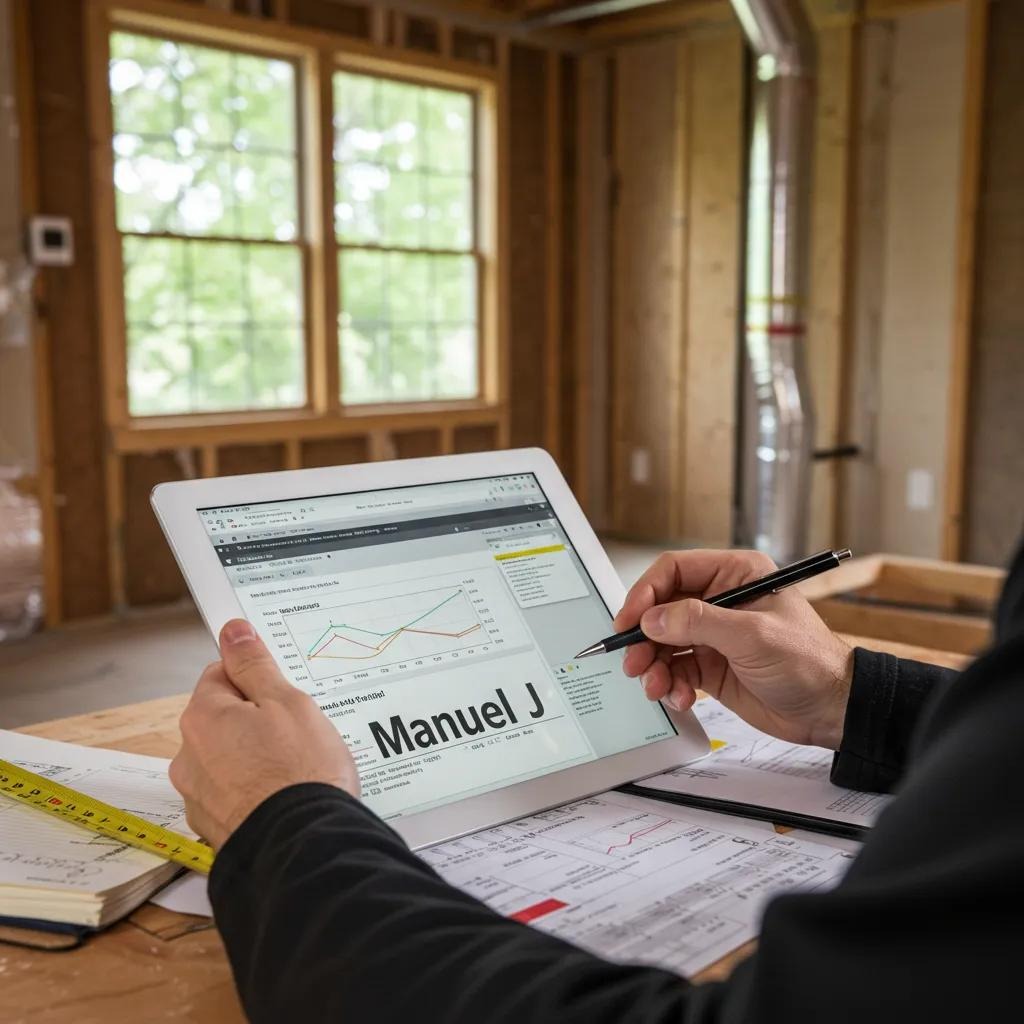
Correct HVAC sizing matches equipment capacity to the home’s calculated heating and cooling loads so the system runs efficiently and maintains comfort without short cycling. The industry-standard way to determine capacity is a Manual J load calculation, which accounts for square footage, insulation levels, window characteristics, orientation, occupancy, and local climate data to quantify required BTUs or tonnage. Oversizing and undersizing each cause specific performance and humidity control problems, so homeowners should view online calculators only as preliminary guides and rely on a professional Manual J before purchasing. The table below maps common home factors to their impact on load to clarify how each attribute changes sizing outcomes.
The industry standard for accurately determining a home's heating and cooling needs is the Manual J load calculation.
Manual J Load Calculation for HVAC Sizing
Advanced Manual J procedures provide a method for calculating the heating and cooling loads of a building.
Manual J-residential load calculation: full, 2011
Key factors for sizing and their typical impact:
This mapping helps homeowners prepare inputs for a Manual J and demonstrates why professional assessment improves long-term comfort and efficiency. Next, we explain Manual J in practical terms so you can see how it’s performed.
What Is a Manual J Load Calculation and Why Is It Important?
A Manual J load calculation is a standardized method for quantifying a home’s heating and cooling requirements by accounting for thermal gains and losses through building components and internal sources. Inputs include measured square footage, wall and attic insulation R-values, window types and orientations, infiltration rates, and local climate data to produce both sensible and latent cooling loads. A professional Manual J beats rule-of-thumb sizing because it prevents chronic issues like short cycling, poor humidity control, and premature component wear that occur when equipment is mismatched to real loads. Homeowners should request a Manual J as part of a pre-install assessment so the chosen system matches the home’s unique thermal profile and factory warranty requirements.
Having a clear Manual J result enables accurate equipment selection and leads directly into understanding the specific factors that most influence sizing.
Which Factors Affect HVAC Sizing: Square Footage, Insulation, and Climate?
Square footage determines the baseline volume of air to heat or cool, but construction quality, insulation levels, and window efficiency often alter the load significantly from baseline estimates. A well-insulated new build may require less capacity than an older, poorly insulated home with leaky ducts, and window orientation can create concentrated solar gains that require targeted mitigation or zoning. Climate plays a crucial role; Northeast Georgia’s humid-summer profile increases latent load, so dehumidification capacity often becomes as important as peak sensible cooling. Considering these interacting factors ensures that sizing decisions favor both thermal comfort and humidity control.
Understanding these variables clarifies the risks associated with incorrect sizing, which we examine next.
What Are the Risks of Improper HVAC Sizing: Undersized vs. Oversized Systems?
An undersized HVAC system will struggle to reach set temperatures on extreme days, run continuously, and may fail to remove humidity adequately, which leads to comfort complaints and increased wear. Conversely, an oversized system will short-cycle—turning on and off frequently—which reduces dehumidification, increases stress on components, and can shorten system life while causing uneven room temperatures. Both conditions reduce efficiency compared to properly sized equipment and can void warranty terms if installation does not follow manufacturer guidance. Proper Manual J sizing prevents these outcomes by aligning capacity with the home’s specific thermal and latent load characteristics.
After sizing, homeowners often use online tools to get preliminary estimates; the next subsection describes their role and limitations.
How Can You Use an HVAC System Sizing Calculator for Preliminary Estimates?
Online HVAC sizing calculators provide a rough tonnage or BTU estimate based on inputs like square footage, basic insulation quality, and regional climate, and they are useful for initial planning and budgetary research. To improve their accuracy, supply detailed inputs such as ceiling height, number of windows, and construction age, but remember these tools cannot replace a professional Manual J that measures real infiltration and local shading. Use calculator results to compare candidate systems and to prepare questions for an installer, then request a formal Manual J before final equipment selection. Relying on online estimates alone risks oversimplification and the problems of improper sizing described earlier.
With sizing and load understanding in place, the next major topic is efficiency: how to evaluate SEER, AFUE, and HSPF values.
What Energy Efficiency Ratings Should You Consider When Choosing an HVAC System?
Energy efficiency ratings quantify equipment performance in standardized ways so homeowners can compare systems on expected energy use and seasonal performance characteristics. SEER measures cooling efficiency, AFUE measures combustion heating efficiency for furnaces, and HSPF assesses heat pump heating efficiency; combining these metrics with variable-speed/inverter technology guidance provides a fuller picture of expected operating behavior in Northeast Georgia. Variable-speed compressors and inverter drives improve part-load efficiency and humidity control—key considerations in humid climates—and ENERGY STAR certification identifies models that meet independent efficiency criteria. The table below summarizes these ratings and recommended ranges for homeowners shopping in the region.
This table clarifies which metrics to prioritize depending on system type and local climate demands. Next, we define SEER in practical homeowner terms.
What Does SEER Rating Mean for Air Conditioning Efficiency?
SEER (Seasonal Energy Efficiency Ratio) measures the cooling output of an air conditioner over a typical cooling season divided by the energy consumed; a higher SEER indicates lower seasonal energy use under standardized conditions. In humid climates, higher SEER equipment often uses variable-speed compressors to run longer at lower capacity, improving dehumidification and comfort despite increased upfront cost. For Northeast Georgia homes that run cooling extensively, aiming for mid- to high-SEER units can reduce operating hours and improve comfort, especially when combined with proper duct sealing and thermostat control. Evaluating SEER alongside part-load performance ensures the chosen system delivers real-world benefits beyond headline efficiency numbers.
This leads to AFUE for furnace buyers.
How Is AFUE Rating Used to Measure Furnace Efficiency?
AFUE expresses the percentage of fuel converted to heat in a furnace over a typical heating season; for example, an AFUE of 90% means 90% of the fuel becomes usable heat while 10% is lost. Higher AFUE furnaces reduce fuel consumption during the heating season, which matters more in colder climates, but AFUE is still a useful comparison metric where furnaces are selected for backup or high-output needs. Choosing the right AFUE depends on fuel availability, climate, and long-term operating cost considerations; homeowners should weigh AFUE against installation complexity and compatibility with their existing ductwork and controls. Proper installation ensures the rated AFUE aligns with achieved performance.
What Is HSPF and Why Is It Important for Heat Pumps?
HSPF (Heating Seasonal Performance Factor) measures the efficiency of a heat pump’s heating mode across a season by dividing total heating output by total energy input; higher HSPF values indicate more efficient heating. In mild-winter regions like Northeast Georgia, a higher HSPF improves winter comfort and can make heat pumps a compelling primary heating option when paired with appropriate controls. Comparing HSPF alongside SEER helps evaluate heat pump trade-offs between cooling-season efficiency and winter heating performance, and modern inverter-driven units often excel across both metrics. Selecting a heat pump with solid HSPF and SEER values improves year-round comfort and reduces reliance on supplemental heat.
How Do Variable Speed and Inverter Technologies Improve HVAC Efficiency?
Variable-speed compressors and inverter-driven motors modulate output to match current load continuously rather than operating at fixed full capacity, which reduces cycling losses and improves humidity control. This part-load efficiency is especially valuable in humid climates where systems often run at partial capacity to maintain temperature and remove moisture, and it leads to quieter, steadier operation with fewer temperature swings. Variable-speed systems also integrate well with zoning and advanced controls to deliver tailored comfort per area, amplifying both energy savings and occupant satisfaction. When combined with good system design and ductwork, inverter technology substantially improves real-world efficiency beyond static rating comparisons.
ENERGY STAR certification helps identify systems that meet broader efficiency benchmarks, which is useful when comparing models and installers.
What Are the Benefits of Choosing Energy Star Certified HVAC Systems?
ENERGY STAR certification indicates that a system meets established efficiency criteria set by a trusted independent program, signaling lower expected energy consumption and environmental impact. Choosing ENERGY STAR equipment often aligns with rebate and incentive opportunities through local utilities or manufacturers, and certification provides a clear vetting step when comparing models. Homeowners should verify certification and consult local utility resources to explore potential incentives that can enhance upfront affordability. Selecting ENERGY STAR systems paired with proper installation and maintenance ensures the certified performance translates into measurable operating benefits.
Which Are the Best HVAC Brands and Features to Consider in Northeast Georgia?
Brand selection should balance equipment technology, local parts and service availability, and installer experience with specific product lines, because warranty fulfillment and ongoing support matter as much as nameplate efficiency. Leading manufacturers offer high-efficiency inverter and variable-speed platforms, and for Northeast Georgia homeowners, compatibility with effective dehumidification strategies and smart control ecosystems is an important brand differentiator. Features to prioritize include variable-speed compressors, smart thermostat compatibility, zoning capability, and robust warranty terms backed by local authorized service. After discussing the brand landscape, we will note how Southeast Heating & Cooling LLC’s local experience aligns with these considerations and how to take the next step toward a professional assessment.
Homeowners should evaluate features that materially affect comfort and serviceability:
- Variable-Speed Compression: Improves humidity control and efficiency.
- Smart Thermostat Compatibility: Enables remote control, schedules, and diagnostic data.
- Zoning Support: Allows tailored temperatures by area to save energy and enhance comfort.
These feature priorities guide brand comparisons and the selection of models suited to local climate demands. Below we examine a specific brand often recommended by local installers.
Why Is Daikin a Top Choice for Energy-Efficient HVAC Systems?
Daikin offers a wide range of inverter-driven systems and variable-capacity equipment that prioritize part-load efficiency, quiet operation, and modern controls—attributes that align well with humid-summer, mild-winter climates. Local installers often favor brands with reliable parts availability and serviceability, and Daikin’s product variety allows match-ups for ducted, ductless, and hybrid installations. Compatibility with common smart thermostats and zoning accessories further enhances Daikin systems’ practical comfort benefits, making them a frequent recommendation for homeowners prioritizing humidity control and efficient cooling. For homeowners seeking local installation and ongoing support, Southeast Heating & Cooling LLC installs and services recommended brands like Daikin and can assess which models best fit your home.
How Do Carrier, Trane, and Lennox Compare in Performance and Reliability?
Carrier, Trane, and Lennox each offer broad product tiers from entry-level to premium systems, with differences in design emphasis, part availability, and dealer networks that affect local service experiences. High-tier models from these manufacturers commonly include variable-speed and modulating options, while mid-tier lines balance cost and performance for many retrofit projects. Rather than ranking these brands absolutely, homeowners should assess local authorized service availability, warranty terms, and installer familiarity with specific product families when evaluating options. Choosing an installer that regularly works with your selected brand increases the chances of optimal installation and reliable warranty support.
A related practical consideration is smart controls and zoning features that enhance on-the-ground comfort.
What Smart Thermostat and Zoning Features Enhance HVAC Comfort?
Smart thermostats enable scheduling, geofencing, learning algorithms, and remote access, which improve comfort and can reduce runtime when used effectively with system zoning. Zoning systems divide a ducted home into independently controlled areas, often using motorized dampers and multiple thermostats to reduce overconditioning of unused spaces and improve occupant comfort. Integration between smart thermostats and variable-speed equipment magnifies benefits by allowing the system to modulate airflow according to demand in each zone. When planning an installation, verify thermostat compatibility with the chosen brand and consult an installer for control wiring and zoning strategies.
How Do Manufacturer Warranties and Service Support Affect Your Choice?
Warranties vary by manufacturer and model and may cover parts, compressors, and limited labor for specific durations; the value of a warranty depends on the ease of accessing authorized service locally. Many warranties require professional installation by an authorized dealer to remain valid, so selecting an installer with manufacturer authorization and documented installation practices protects warranty eligibility. Homeowners should request clear warranty terms and keep post-install documentation for activation and future claims. Local service availability influences routine maintenance responsiveness and emergency repairs, which directly affects system uptime and long-term satisfaction.
What Budget and Financing Options Are Available for HVAC System Installation?
Budgeting for an HVAC installation requires balancing equipment type and efficiency level against installation complexity such as ductwork repair, permitting, and any IAQ upgrades required to meet comfort objectives. Financing options commonly include manufacturer promotional plans, installer-offered payment programs, and third-party loans that convert a larger upfront expense into manageable monthly payments. Homeowners should also weigh lifecycle savings from high-efficiency equipment against upfront costs to determine the most cost-effective approach over the system’s expected lifetime. The next subsections break down key cost drivers, financing approaches, and how efficiency investments translate into long-term value.
Common cost drivers and how they impact project scope:
- Equipment Type and Efficiency: Higher-efficiency units often cost more upfront but yield lower operating costs.
- Installation Complexity: Ductwork repairs, structural work, and zoning increase labor and time.
- Permits and IAQ Additions: Required permits and optional IAQ equipment like purifiers or dehumidifiers affect overall budgets.
These drivers inform financing discussions and how promotions may reduce initial outlays, which we discuss below.
What Factors Influence the Cost of a New HVAC System?
The main cost drivers for an HVAC replacement or new installation are equipment selection, the complexity of installation, ductwork condition, and any necessary electrical or structural upgrades. High-efficiency systems and additional IAQ equipment add to equipment costs, while labor increases with multi-zone systems or difficult access for outdoor units and duct runs. Permit costs and inspection requirements vary by locality but should be part of the initial scope to avoid surprises. Recognizing these factors early helps homeowners obtain accurate bids and compare proposals on an apples-to-apples basis.
How Can Financing and Promotions Make HVAC Upgrades More Affordable?
Financing mechanisms—such as low-interest monthly payment plans or deferred-payment promotions—spread the upfront cost of HVAC upgrades across a manageable timeline and can make higher-efficiency systems attainable. Installer promotions, manufacturer incentives, and utility rebates (check your local utility resources) can reduce effective upfront cost, and bundling maintenance plans may further lower long-term expenses. Homeowners should request a written financing proposal and confirm any promotion terms before committing. For precise financing options and current promotions, consult your installer to compare structured payment scenarios for your project.
What Are the Long-Term Savings of Investing in High-Efficiency HVAC Systems?
High-efficiency equipment typically reduces seasonal energy consumption, improves humidity control and comfort, and often lowers maintenance stress by operating more evenly and with fewer full-capacity cycles. Over a system lifecycle, improvements in operating cost and prolonged component life can offset higher initial investment, particularly when combined with proper installation and scheduled maintenance. While exact savings vary by usage patterns and local rates, prioritizing systems with good part-load performance and variable-speed capability delivers consistent comfort improvements that homeowners notice seasonally. A comprehensive assessment that includes Manual J sizing, proper installation, and a maintenance plan maximizes the likelihood of achieving those long-term savings.
How Does Indoor Air Quality Impact Your HVAC System Choice?
Indoor air quality (IAQ) affects equipment selection, filter choices, and the design of ventilation and dehumidification strategies because particulate filtration, ventilation rates, and humidity control directly interact with HVAC performance. Integrating whole-house filtration, UV purifiers, and dedicated dehumidification can reduce allergens and moisture-related issues that are more prevalent in humid climates, and system selection should consider both airflow capacity and space for IAQ equipment. Proper maintenance is critical to preserve IAQ performance over time, and formal maintenance plans help ensure filters, coils, and drains are serviced regularly. Below we outline common IAQ options and how systems reduce allergens and humidity problems.
What Indoor Air Quality Solutions Are Available with HVAC Systems?
Common IAQ products include high-MERV filters, whole-house media filters, UV germicidal lights, and whole-house dehumidifiers that attach to the duct system or air handler. High-efficiency filters remove a greater percentage of airborne particles and are a low-cost first step, while active technologies like UV lights and electronic purifiers address bacteria, mold spores, and volatile organic compounds more directly. For homes with allergies or pets, combining filtration with ventilation strategies and humidity control often yields the best results. Proper equipment sizing and periodic maintenance are essential to preserve IAQ benefits and avoid pressure drop issues that reduce system performance.
How Can HVAC Systems Help Reduce Allergens and Improve Home Comfort?
HVAC systems reduce allergens primarily through filtration, controlled ventilation, and humidity management; selecting a filter with an appropriate MERV rating and ensuring proper airflow avoids creating pressure or flow problems. Ventilation strategies that bring in filtered outdoor air while exhausting stale indoor air help dilute indoor pollutants, and maintaining relative humidity between roughly 40–50% reduces mold growth and dust mite proliferation. Zoning and balanced airflow ensure frequently used spaces receive adequate filtration and comfort while avoiding overworking the system. Regular maintenance preserves these IAQ functions by keeping coils clean and filters changed on schedule.
Why Is Regular Maintenance Important for Indoor Air Quality?
Regular maintenance maintains airflow, filtration effectiveness, and condensate management, all of which directly affect indoor air quality and system longevity. Routine tasks include filter replacement, coil cleaning, checking condensate drains, and verifying airflow and refrigerant charge; neglecting these items can reduce efficiency and increase microbial growth in moist components. A formal maintenance plan ensures scheduled service and early detection of issues before they escalate into comfort or health problems. For homeowners evaluating maintenance options, enrolling in a scheduled air filter replacement often provides priority service and helps document upkeep for warranty purposes.
What Can You Expect During HVAC Installation and Maintenance?
A professional HVAC installation follows a structured sequence: pre-install assessment and Manual J confirmation, equipment removal, precise placement and connections, system startup, testing, and homeowner orientation. Quality control checks during installation verify airflow, refrigerant charge, control integration, and safety systems, and installers should provide documentation for warranty activation and maintenance scheduling. Regular maintenance visits include seasonal tune-ups that inspect electrical components, clean coils, check refrigerant, and verify thermostat performance to keep systems operating efficiently. Below we detail the installation steps and describe the Southeast Comfort Club maintenance plan to illustrate how ongoing care protects system performance.
Homeowners can expect a clear, documented process and testing on install day:
- Pre-Install Assessment: Confirm Manual J and site conditions.
- Equipment Removal and Placement: Remove old equipment and set new units.
- Connections and System Startup: Connect refrigerant, ducts, and controls; test operation.
This stepwise approach ensures the new system delivers designed comfort and efficiency. The next subsection describes in more detail what occurs on installation day.
What Happens During a Professional HVAC Installation?
Professional installation begins with a final verification of the Manual J load calculation and site assessment to confirm the selected equipment matches the home’s requirements. Technicians then safely remove any existing equipment, prepare mounting pads and duct or line-set penetrations, and install new indoor and outdoor components with proper clearances and support. After mechanical and electrical connections are complete, the system is charged, balanced, and put through performance tests that verify airflow, temperatures, and control responses, followed by a homeowner walkthrough explaining filters, thermostat settings, and maintenance expectations. Documentation of system settings and warranty information is provided to the homeowner to support future service and claims.
How Does the Southeast Comfort Club Maintenance Plan Extend HVAC System Life?
The Southeast Comfort Club provides scheduled semi-annual servicing that includes key checklist items such as filter inspection, coil cleaning, airflow verification, refrigerant checks, and safety controls testing to maintain performance and detect issues early. Membership typically grants priority service and discounts on repairs and parts, helping homeowners avoid emergency breakdowns and preserving manufacturer warranty conditions that require regular professional maintenance. Consistent tune-ups reduce the risk of costly failures and improve equipment longevity by ensuring systems run within designed parameters. For homeowners seeking an organized maintenance approach, the Southeast Comfort Club offers a practical way to safeguard comfort and investment.
To generate leads for HVAC service appointments (repair, maintenance, installation) and provide information that builds trust and demonstrates expertise. For help scheduling a Manual J, professional assessment, or to join a maintenance plan, contact Southeast Heating & Cooling LLC by phone at (770) 265-8308 or by email at Office@hvacsoutheast.com.
Conclusion
Choosing the right HVAC system is essential for achieving optimal comfort, energy efficiency, and indoor air quality tailored to your home’s unique needs. By understanding system types, sizing, and efficiency ratings, homeowners can make informed decisions that enhance their living environment while reducing long-term costs. Take the next step towards a more comfortable home by scheduling a professional assessment with our experienced team. Explore our services today to find the perfect HVAC solution for your needs.
Related Blogs
Customer Testimonials


Financing
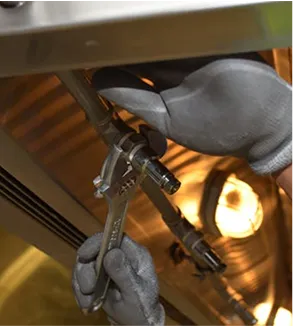
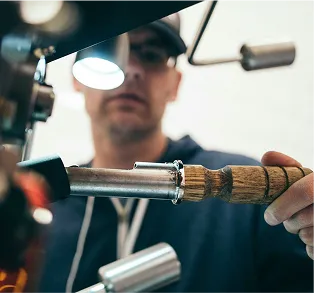
Latest Blogs

Heat Pump Defrost Issues: Solving Your Icing Dilemma







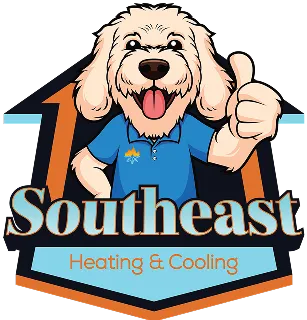

.jpeg)

